
9 Days discover the Mysterious Nujian Grand Canyon tour will let you discover a different Yunnan. The wild nature landscape like Nu Valley and Gaoligong mountain is really worth to discover. Extending more than 300 miles along Yunnan's border with Myanmar, the narrow, jagged Gaoligong mountain range meets with the Salween River in a dramatic 500-mile-long gorge. The mountains form a divide between two major rivers in Asia, with the Salween, known to the Chinese as the Nu River to the east and the Irrawaddy to the west. Two more great rivers, the Yangtze and the upper Mekong, converge where the mountains meet the Nujiang River gorge. Remote and rugged, the Gaoligong Mountains are recognized as a global biodiversity hotspot and the epicenter of plant endemism in northwest Yunnan. Across the hidden mountain in Northeast of Yunnan ,along with Dulong River valley, you will meet the last Dulong Women with Facial Tattoos lived a remote ethnic group. They are widely known as 'the face-tattooed tribe', which means to the facial tattoos of its women.
Arrive at Dali airport, our guide will pick up you at exit of the arrival Hall, then head to your hotel for check in.
Rest time of the day at your leisure or have a good rest after long flying.
Overnight at Dali.
Morning, drive to the west to Liuke Town ( 4.5-5.5hrs -185km ) of Nujiang Lisu Nationality Autonomous Prefecture borders Myanmar to the west. It has five counties under its jurisdiction with its administrative headquarters in the Liuku township. Ethnic minority groups inhabiting this prefecture include the Lisu, Nu and Dulong peoples.
On the way , you will enjoy the view of Nujiang River a famous river in southwest China. Nujiang deep inside the Qinghai-Tibet plateau, flows into Myanmar and changed name into Salween River, finally go into the Indian Ocean in the Andaman Sea. Nujiang Grand Canyon is the world’s third Grand Canyon to the Brahmaputra waters canyon in China and of the Colorado Grand Canyon in the southwestern United States. And stop to take picture of Nujiang River Bridge which is a railroad bridge part of the Dali–Ruili Railway in China's Yunnan province . It is 1,024 metres (0.636 mi) long. Construction started January 24 2016. The steel truss arch bridge has a main span of 490 meters and a total length of 1024 meters, with the bridge deck being 211 meters above the Nu River.
In the evening, you move to Baihuling Lishu Village to enjoy the Four Part Singing Show at their church, which exhibits the exceptional talents of the Lishu ethnic minority group, which makes up much of the population of Liuku.
Lunch en route and dinner on your own account.
Overnight at Luke
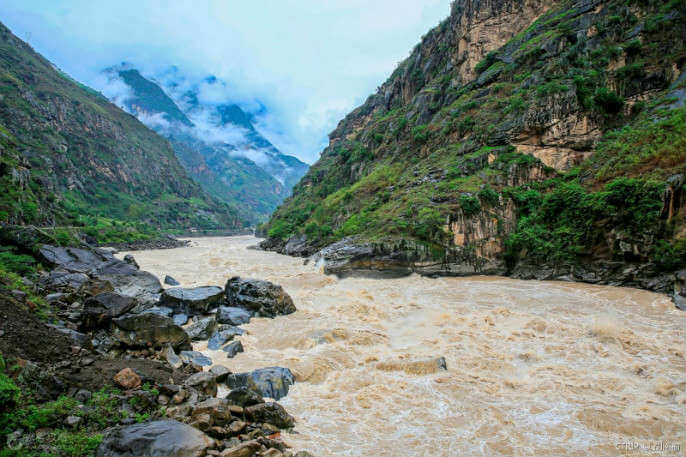
This morning, you will further the driving to Gongshan ( 6.5-7hrs 248km) an autonomous county where 12 ethnic groups live including 3 of the earliest inhabitant minorities, namely the Nu, Drung and Tibetan. It is an important town(though just a one-street-town) because it is the closest supply depot for hardware and other requirements to all the towns and villages north and east (to Drung territory) of here.
Along the road, you will enjoy the amazing landscape of the Nujiang Canyon outside the car window. The 316-kilometer-long Nujiang Canyon is flanked by two 4,000-meter-high mountains. The mountain peaks on the two sides have an average altitude of over 3,000 kilometers. You will stop to take view of Laohutiao which is a steep and narrow section of the canyon and Stone Moon Atop the Gaoligong Mountain is a big round cave that from afar looks like a full moon hanging in the sky among the verdant mountains. Through the cave, you can faintly see the entirely imaginary clouds. And the Lisu Ethnic Bathhouse. When spring comes every year, the Lisu ethnic people use this bathhouse to bath. This tradition has been kept for hundreds of years. People of all ages and both sexes will come here for a bath where the holy spring water is reputed to wash away all the unlucky things.
Arrive at Gongshan in the later afternoon and check in your hotel. Overnight at Gongshan
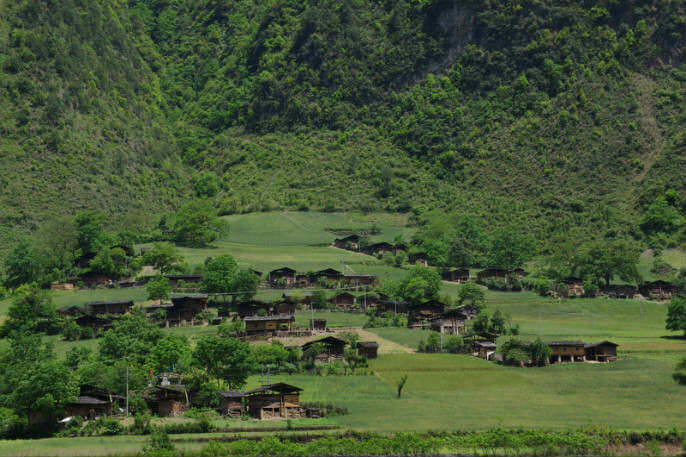
After breakfast , head to Bingzhongluo Village (42km --1hr)a place which represents the southernmost extent of Tibetan culture, and the northernmost extent of Han Chinese influence in the valley. The local population includes Nu and Lisu people, as well as some Dulong. Even a Christian community exists, boasting a sizeable church down the hill from the town proper - but to get there you first have to pass by a Tibetan stupa.
On your way , take a stop at a U-shaped bend on the surface surrounded by mountains. Seen from afar, it looks like a jade belt inlaid at the foot of the mountains. As one of the classic scenic spots of Nujiang Canyon, it should never be missed, since people always say, "Without paying a visit to the First Bend, your trip to the Grand Canyon will be worthless".
Then you will trekking in Bingzhongluo to make the tour of Tibetan Puhua temple and the Zhongding Catholic Church, which was built by French missionaries. Then have a leisurely walks along the banks of the Nujiang where you can visit small and friendly villages on both sides of the river using the wooden bridges and overhead cables to get back and forth.
After the tour , you will back to Gongshan.
Overnight at Gongshan
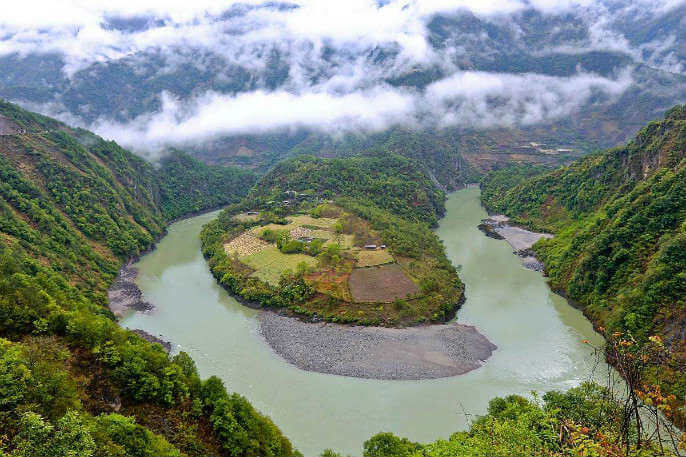
After the breakfast, departure to Dulongjiang Township (3-4hrs) this township was name after Dulongjiang River. It situated in the northern Nujiang prefecture in Gongshan County. Earlier, it was barely known much to people because of the isolation it had from outside world. Here is home to people of Dulong ethnic group. Due to abominable natural conditions, the local economy was underdeveloped in the past. It is the last China town which was linked by roads. After years of development, roads have been paved and modern dwelling houses built to replace the grass thatch-covered houses.
This driving is climbing up Gaolingong mountain along the famous Dulongjiang Road which is the only road linked Dulongjiang Township and the outside world. This road is about 96.2km long from Gongshan to Kongdang the capital of Dulongjiang Township under a construction for 4 years ( 1995 to 1999). However the road still be blocked for the heavenly snow about half year. This situation be changed until the Dulongjiang Tunnel at length of 6680m which was opened to traffic in 2015. Meanwhile it shorten the form 9 hours’ driving time into 3-3.5 hours.
After lunch at Kongdang , you will take a tour of Longyuan Village which is widely know as 'the face-tattooed tribe', the group is well-known for the facial tattoos of its women.
Take pictures with the Donglong face-tattooed ladies (need to pay) Dulong women traditionally tattooed their faces when they at age of 12 or 13 years. Dulong facial tattoos often took the form of butterflies, in accordance with their belief that the souls of the dead turn into butterflies. The tattoos were etched onto the faces of the girls using bamboo needles and an ink made out of ashes from the bottoms of cooking pans. However, the custom was abolished after the People's Republic of China (PRC). There are now only less 28 living Dulong women with facial tattoos and this aspect of their culture may disappear very soon.
Lunch and dinner at local restaurant
Overnight at Kongdang.
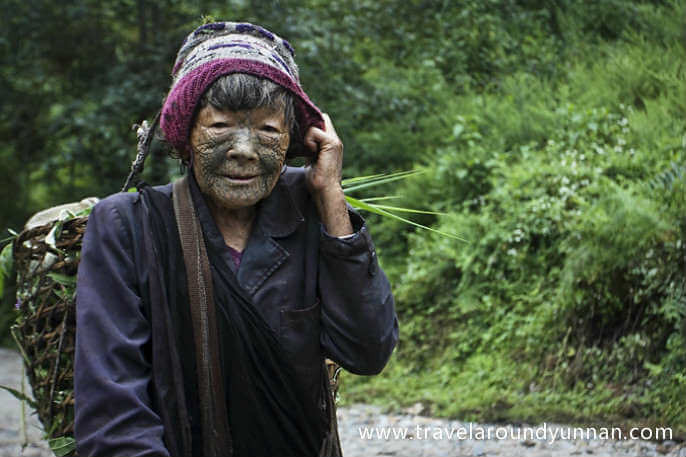
This morning, transfer 20m to Pukawa Village it is a quiet village located the riverside of Donglong River. Here you can see the typical grass thatch-covered houses of Dulong style. And continue to Bapo Village you can see a path narrow road in the middle of steep rock from the viewing platform. That is the only road to the outside world until the new road been built in 1999. After across a bridge you will arrive at Qinlangdang Village which is the closest village to border of Myanmar. The Dulong River passing Qinlandang village to flows in Myanmar, renamed as Nmai Hka.
Then trekking 1km to see the Haba Waterfall it was called as the most beautiful waterfall of Donglong River. Take a stop at the No.41 boundary tablet of China and Myanmar.
After the tour, back Kongdang (2hrs )
Lunch and dinner at local restaurant
Overnight at Kongdang.
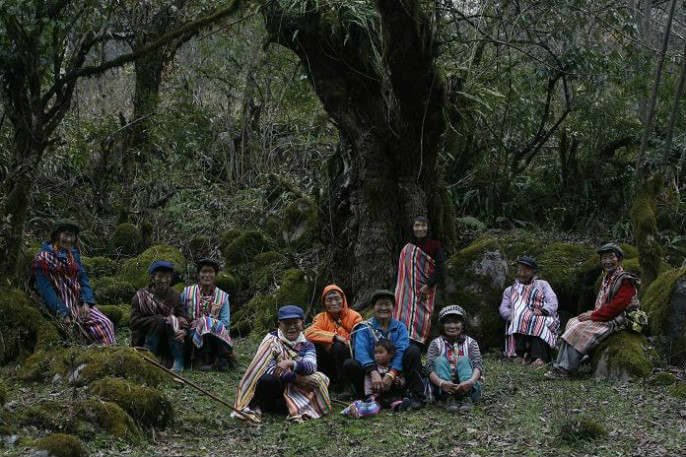
After breakfast, departure to Fugong via Gongshan ( 7hrs -223km ) the road is tough go since the road to Fugong is passing much mountainous terrain.
While it may be a challenge for the driver, you can sit back and enjoy the sweeping and spellbinding vistas outside the window.
Upon arrival, check in your hotel in Fugong is a palace mainly populated by the Lisu tribe. There are rice terraces just outside the town centre on the slopes all along the river, easily accessible by walking. All along the trek up the slopes, the view extended to the Gaoligong Mountains with snow crowned peaks soaring over 4000m
In the evening, you will be treated to a feast of Nu cuisine, and there will be much dancing and singing for entertainment
Overnight at Fugong
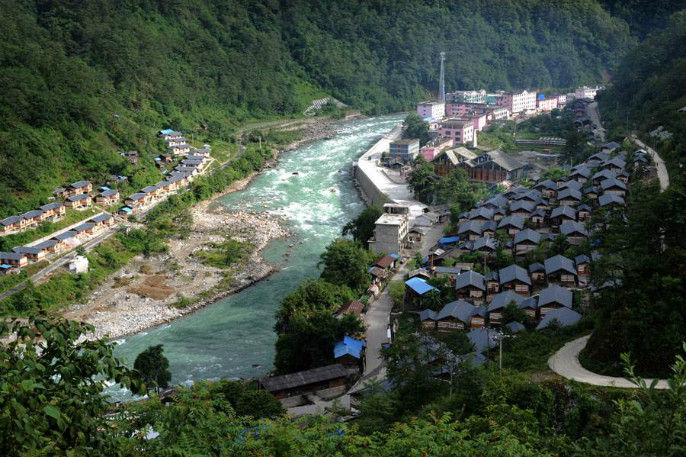
In the morning, drive back to Liuku (4hrs-135km ), you will take a stop to visit “Waste city -Zhiziluo “ Zhizilou means good place in Lisu language. It is located in the Biluo Snow Mountain at 2023 meters above sea level, which is about 1000 meters higher than the Nu River. It once was the form stat capital of Nujiang Prefecture since found of PRC. At the begging of 1970s, since some experts predict that the whole city has a great possibility be destroyed by the large scale of debris flow disaster. Therefore the whole city move to Liuku for the security reason as well as it became a empty and waste city. Continue to visit Christ Church in Laomudeng Village Laomudeng comes from Nu language means “ the palace where people like to visit “ There is the largest Christ Church of the Nu River Region in the village. The church is a house with red and white color which was built at edge of the cliff. Difference ethnic minority groups inhabiting this prefecture include the Lisu, Nu and Dulong, Tibetan , Bai peoples. Most of them believe in Christian, only a small group people kept the original belief, such as the Lisu Dongba religion and Tibetan Buddhism.
Have lunch at Liuku, afterward drive back to Dali (4hrs) Check in your hotel in Dali after arrival in the later afternoon.
Overnight at Dali
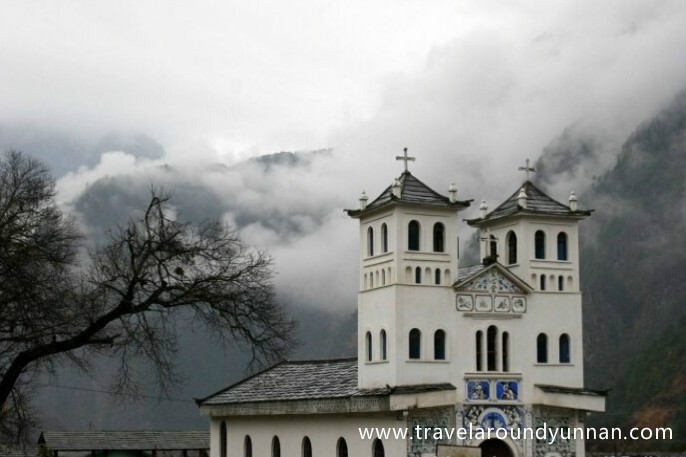
Morning transfer to Dali airport (1.5hrs ) for taking the flight to Kunming ( 50m flying time )
Upon arrival at Kunming you OWN take the connection flight to your next destinations, ending your tour.
Remark : no guide transit service at Kunming airport